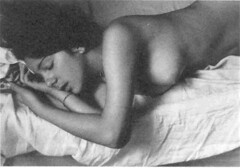Literary Modernism and Photography: (2002) – Paul Hansom
[Amazon.com] [FR] [DE] [UK]
See also Sara Danius book on how modernism was influenced by new media in general.
Review
“Although literary modernism is famously associated with probing interiority while photography is two dimensional , the two moved into prominence concurrently, intersecting in ways that these essays explore. The volume considers documentary uses of the image; the relation between photographers’ aesthetics and their deployment of images; photography as a literary trope; and the transition into postmodernism.”–American Literature
Book Description
The developments in narrative experimentation that marked the modernist period in Europe and the United States provide an interesting crossroads with the development of visual representation during the same time. In this collection of fourteen original essays, scholars from a variety of disciplines explore the ways in which the photograph became a vital emblem of the transformative processes of modernism, offering a new aesthetic and psychological model for the new zeitgeist. The interdisciplinary methodology of Literary Modernism and Photography melds literary, cultural, and photographic theories to offer a challenging literary framework for this period. The essays address the problems surrounding the photograph’s ostensible “factuality”-its presumed ability to represent the real world-and suggest the difficulties inherent in aestheticizing the real into fictive forms, while also examining how the photograph shaped and reflected the new, modern artistic self-consciousness of figures such as Alfred Stieglitz, Vanessa Bell, and Willa Cather. If literary modernism heralded a re-visioning of the world, then the photograph was the concrete rendering of this new vision.
A positive review of John Carey’s The Intellectuals and the Masses
WHEN IT IS published in the United States, John Carey’s polemic The Intellectuals and the Masses will probably startle reviewers. It certainly caused a flap when the British edition came out in the summer of 1992. Though an Oxford professor, Carey is a blunt literary populist: he argues that the fundamental motive behind the modernist movement in literature was a corrosive fear and loathing of the masses. Nietzsche, Ortega y Gasset, George Gissing, H. G. Wells, Bernard Shaw, T S. Eliot, Virginia Woolf, Sigmund Freud, Aldous Huxley, Wyndham Lewis, D. H. Lawrence, Ezra Pound, and Graham Greene all strove to preserve a sense of class superiority by reviling the mean suburban man. They convinced themselves that the typical clerk was subhuman, bestial, machinelike, dead inside, a consumer of rubbishy newspapers and canned food. The intellectuals had to create this caricature to maintain social distinctions in an increasingly democratic and educated society. Many of these writers ultimately disposed of the masses through fantasies of wholesale extermination, usually rationalized on eugenic grounds. –Jonathan Rose quoted in The Intellectual Life of the British Working Classes (2001), this copy sourced http://www.autodidactproject.org
See also: modernism – low modernism – mass culture
An article on postcards in relation to modernism:
The very definition of Modernism has always been contentious. Did it begin with the advent of photography, which liberated the visual arts from the obligations of realism, or was its starting point the experiments in the application of color by such Post-Impressionist painters as Cézanne, van Gogh and Gaugin? Did Claude Debussy’s gradual abandonment of tonality, the cornerstone of Western musical composition since J.S. Bach, lead inevitably to Arnold Schoenberg’s polytonality and the sound experiments of Webern, Stockhausen and Cage? Do the honors of introducing non-representational theatre belong to Pirandello, to the German Expressionists or to the Italian Futurists? And where do Kafka, Musil, Svevo and Joyce fit in? –Anthony Guneratne via http://www.co.broward.fl.us/library/bienes/postcard/modernism.htm [Nov 2006]
See also: modernism – low modernism – mass culture












